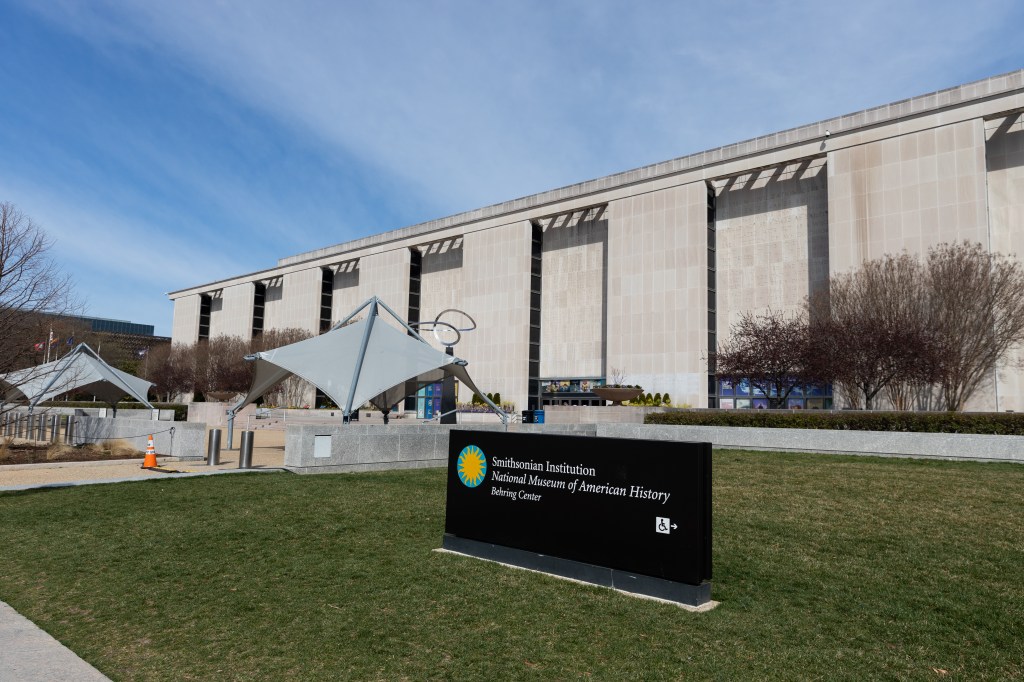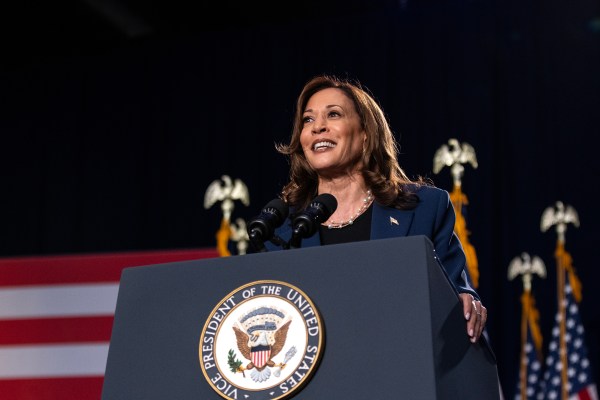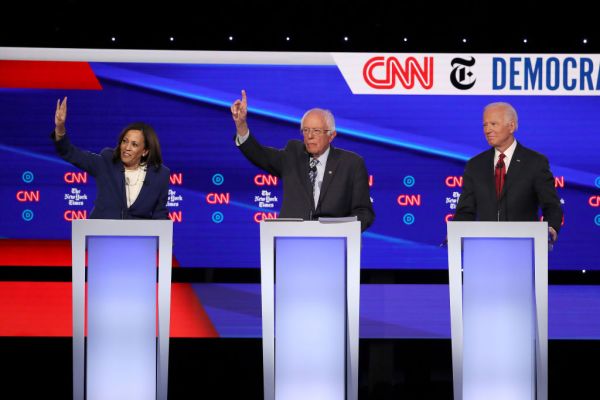The National Museum of American History’s newest exhibit, Entertainment Nation, beckons visitors in with old friends. C-3PO and R2-D2 stand near the entrance. The original Kermit the Frog sits just farther back, and Dorothy’s ruby red slippers sparkle under the display lights. The exhibit, which opened last month after more than a decade of preparation, showcases the past 150 years of American culture. Specifically, the exhibit promises to explore how “entertainment has provided a forum for important national conversations about what kind of people we are—and want to be.”
Regrettably, the curators’ attempts to link the items on display to big moments in American history often produce head scratching results. For example, next to the C-3PO costume and R2-D2 unit—which George Lucas used in filming his original trilogy—a short paragraph of text explains:
“By the mid-1970’s, the nation found itself reeling from its loss in Vietnam and revelations about Richard Nixon’s dirty-tricks presidency. In response, Star Wars creator George Lucas offered a tale set ‘in a galaxy far, far away’ where a struggling republic was fighting for survival. The saga’s motley heroes—a Jedi farm boy, a princess, a pirate, a Wookiee pilot, even droids—inspired hope and raised an enduring question: How can we build a virtuous republic?”
Admittedly, I did not attend the premiere of A New Hope in 1977, but I am fairly certain that most Americans did not go to see Star Wars because they recognized Emperor Palpatine as some kind of Nixon analogue. People fell in love with Star Wars thanks to Lucas’ groundbreaking visual effects, creative story, and because lightsabers were awesome. Can the Smithsonian really claim that Star Wars facilitated a “national conversation” if most folks who bought tickets just thought they were seeing a movie?
Venture further into the exhibit and you’ll learn that ukuleles were “a product of U.S. imperialism,” Mickey Mouse’s design harkened back to blackface minstrel shows, and P.T. Barnum’s circus “expressed the colonial impulse to claim dominion over the world.” There is some truth to these eye-popping assertions. But museums have limited space for text to educate visitors about the items they are viewing, and curators must make choices about what facts to communicate and what facts to exclude. For most of their featured items, the curators of Entertainment Nation have chosen to highlight facts critical of American history—usually along racial and gender lines.
Looking at the past through specific social lenses can produce valuable insights, but it also misses the whole story. Many displays leave out context and nuance that viewers might find relevant. For example, the exhibit showcases the suit that Ellen DeGeneres wore when she received the Presidential Medal of Freedom in 2016. The display text correctly notes that Ellen’s sitcom was canceled shortly after she came out as gay in an episode in 1997. However, if all one knew about Ellen was what one learned from reading the display text, then one would know that after being canceled Ellen “became a vocal and effective activist for gay rights” but not that she also went on to voice one of America’s most beloved animated characters and host one of the most successful talk-shows of all time.
Viewing history through the prism of present-day issues obscures how people living in the past actually thought of themselves. Take the ukulele display. One might think that an exhibit about entertainment in America would explain how the instrument became popular with mainland Americans, would offer examples of famous artists who played the ukulele, or would list popular songs that featured the instrument. Instead, the display text draws attention to American imperialism. It feels like something of a bait-and-switch when Entertainment Nation never explains what exactly Americans found entertaining about the content they consumed.
Finally, the exhibit’s items stand alone, divorced from their own cultural histories. The exhibit features Jon Stewart’s suit that he wore to interview President Obama in 2010, but it does not mention any of the previous and genre-defining late-night hosts who also interviewed presidents. Display text links Halle Berry’s costume as Storm in the X-Men movies to the #BlackLivesMatter movement, but the exhibit includes none of the X-Men comic books that have served as metaphors for civil rights struggles for decades. Entertainment Nation shows off the costumes of two female captains in Star Trek: Discovery, but the exhibit lacks a single reference to the original series—which was barrier breaking in its own ways. As a result, visitors to Entertainment Nation will leave the exhibit with little to no understanding of how American culture has developed and progressed over time. The curators plan to update the exhibit with new items on display every year. Perhaps rotating in some new displays will offer curators the opportunity to fix the exhibit’s present weaknesses. For now, however, Entertainment Nation presents a disjointed assortment of artifacts that—despite including some of the most iconic items in American culture—adds up to less than the sum of its parts.








Please note that we at The Dispatch hold ourselves, our work, and our commenters to a higher standard than other places on the internet. We welcome comments that foster genuine debate or discussion—including comments critical of us or our work—but responses that include ad hominem attacks on fellow Dispatch members or are intended to stoke fear and anger may be moderated.